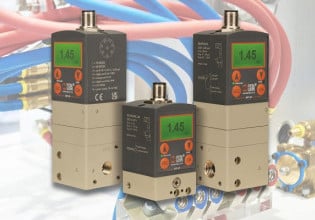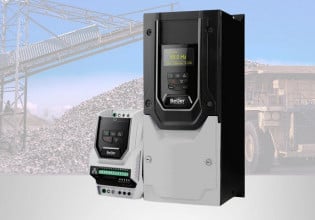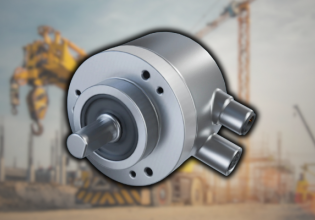Potential Problems Arising from Misuse of Motor Phase Wiring
Using the right motor for the right task is critical - but what happens if the motor is connected to the wrong supply? It is never recommended, but important to quickly understand symptoms of incorrect wiring.
Alternating Current (AC) motors come in two basic varieties: single phase and three phase. In general, single phase AC motors are commonly found in residential applications such as home appliances, and three phase AC motors are found in industrial applications. This has more to do with the fact that most homes are wired with single phase power, while most industrial sites have three phase power.
Given these two different power schemes, which motors can be used where, and what might happen if a motor is used with a wrong or faulty power supply? This article will explore a few of these options.
Single Phase vs. Three Phase Power
Before discussing the motors themselves, it is important to understand what is meant by “single phase” and “three phase” power. Single phase power, common to many homes, is a wiring standard with three wires: two hot wires (or one hot and one neutral wire) that complete the circuit and carry current under normal conditions, and a ground wire that will carry current only during a fault to the ground for safety purposes. In the United States, these wiring schemes will have either 240 V or 120 V RMS between them, respectively, both oscillating at 60 Hz.
Three phase power can have either four or five wires, depending on the configuration. There are three phase lines, sometimes a neutral line and almost always a ground line (the ground line is often not mounted as one of the wires, so this may be reported as “3-wire…” or “4-wire with ground”). The three phase lines each act as hot wires, but they are placed 120 degrees out of phase from each other.

Figure 1. Three phase power sequence diagram. Image used courtesy of Wikipedia Commons
Three Phase Motor Advantages
Three phase AC motors have some distinct advantages. In particular, the speed can be tightly controlled through the use of a variable frequency drive (VFD) using pulse width modulation (PWM), whereas most single phase motors only have a few taps for a few fixed speeds. Besides speed control, three phase AC motors can be run more efficiently, deliver higher and more consistent power, and can be run with higher voltages to consume less current.
Can a Single Phase Motor Run on Three Phase Power?
If the 3-phase system is equipped with neutral, such as a Wye-configured 208 volt supply where the voltage from line to ground is 120 volts, it’s actually real single-phase power, and we have no problem whatsoever with this motor! The question to address here is, in the event that the supply does not have a neutral line, could the single phase motor be connected to the three phase supply lines?
While not ideal, a single phase motor could be made to work with a three phase power system, as long as the line-to-line voltage does not exceed the rating of the motor. However, there is a common misconception that must be avoided. The temptation is to wire the motor on a single phase of the three phase system. The problem with this configuration is that the three phases are out of balance.
It is theoretically possible to wire three, single phase motors, one to each phase of a three phase system, provided they are similar enough to minimize the differences in loads between the three phases. This is called a “three phase motor bank” and it is used in some HVAC, robotics, and materials transportation type tasks. Consider an assembly line where multiple motors may turn at the same speed with consistent, non-extreme loads. In this case, a three phase motor bank can be balanced relatively easily.
Because single phase motors are typically designed for 120 V/60 Hz power, it is important to ensure the motors can handle any frequency control provided by the VFD, and most cannot. Individual speed control between the three phases, to preserve this balance would also be tricky. Furthermore, uneven wear or loading will increase the imbalance between the phases, both affecting the lifetime of the motors and reducing the efficiency of the system. All this to say, in most situations, it would be far better (and less expensive) to use one three phase motor than to experiment with three single phase motors.
Three Phase Motors Wired Incorrectly
One potential problem with three phase power is the potential for one or more of the phases to fail. It is entirely possible for one phase to have a fault, and no longer supply power. If a three phase motor is running on only two phase lines (either from a fault, or even from running the motor on a single-phase supply), all of the advantages of using a three phase motor go away.
Speed control is much more difficult, as there is at least one phase missing, meaning the remaining phases must make up the difference. The VFD must adjust for the missing phase; if it can do so through a speed sensor, it may just increase the current draw, physical and thermal overload of the remaining phases, and a host of related problems. If the VFD acts as an output terminal only, it will not accurately bring the motor to the proper speed. Also, the motor will be operating at reduced torque, even with the higher current draw, meaning overall efficiency is reduced and it may have trouble starting or running.
Furthermore, the motor is no longer electrically or magnetically balanced, which can generate electromagnetic interference (EMI). Some of these signals will be dampened by the chassis, but the EMI may affect nearby instruments. The imbalance is not only electrical, but also mechanical, and vibration will be detected on the motor’s load.
Overall, wiring a three phase motor with the wrong number of phases will lead to a motor that is electrically noisy, unbalanced, and with lower performance and efficiency. The motor is more susceptible to overload and its life will likely be shorter.
It is worth noting that the VFD can do a great many things, and so it can be used to simulate a three phase system. With proper tuning of the VFD, imbalance and vibration can be reduced, while the torque and speed can approach those found while running on three phases.
There is also another wiring scheme where a large capacitor is placed between terminals to cause the signals to shift phase. Proper capacitor sizing (and thus the proper time constant) can cause enough of a phase shift to simulate three phases.

Figure 2. A cutaway view of a three phase motor. Image used courtesy of Wikipedia Commons
Frequency: 60 Hz versus 50 Hz
While the standard in the United States is 60 Hz, much of the world uses 50 Hz supply power. Suppose a company wants to build a twin manufacturing plant overseas that matches one existing in the United States. If identical motors are used, the one that is supplied with 50 Hz will run a little slower, draw a higher current, and will have lower torque than expected.
The motor will run, but these are not the only considerations. Often, the motor’s cooling fan is attached to the same shaft as the motor. If the motor is turning slower, the fan is turning slower, and cooling is reduced. Combine the reduced cooling capacity with the higher current draw, and there is a much higher chance of thermal overload. Motors are designed to run on certain operating frequencies, so it’s easy to source the right motors for the right power system.
So, Should you Interchange Motors and Power Systems?
In the end, the question to ask is not “what will happen if” but “how should this be wired?” All motors contain a nameplate that will explain the proper operating conditions.
Any deviation from these will result in reduced performance, additional wear, and perhaps dangerous operating conditions. The best idea is to either purchase an appropriate motor for the situation or change the wiring to match the existing motor, not to see what one can ‘get away with’.
The information presented here is only meant to suggest troubleshooting symptoms and theoretical results, NOT to suggest a course of action. At best, performance is reduced, but at worst, the wiring overheats and potentially starts a fire. It is simply not worth the risk.






